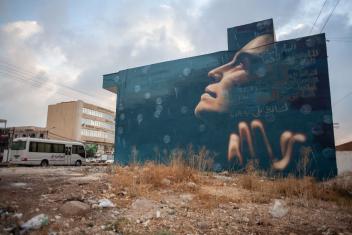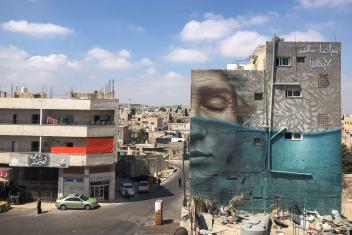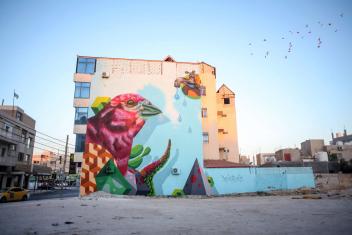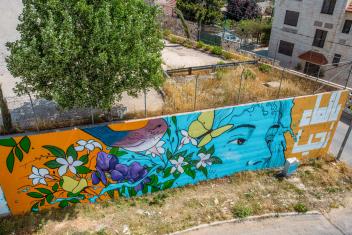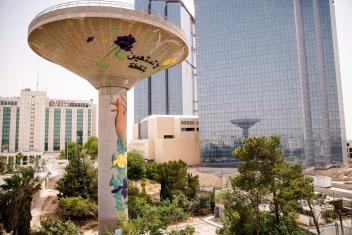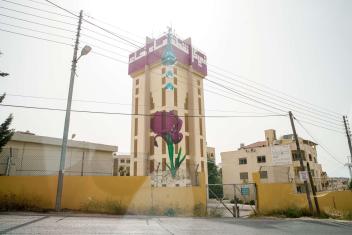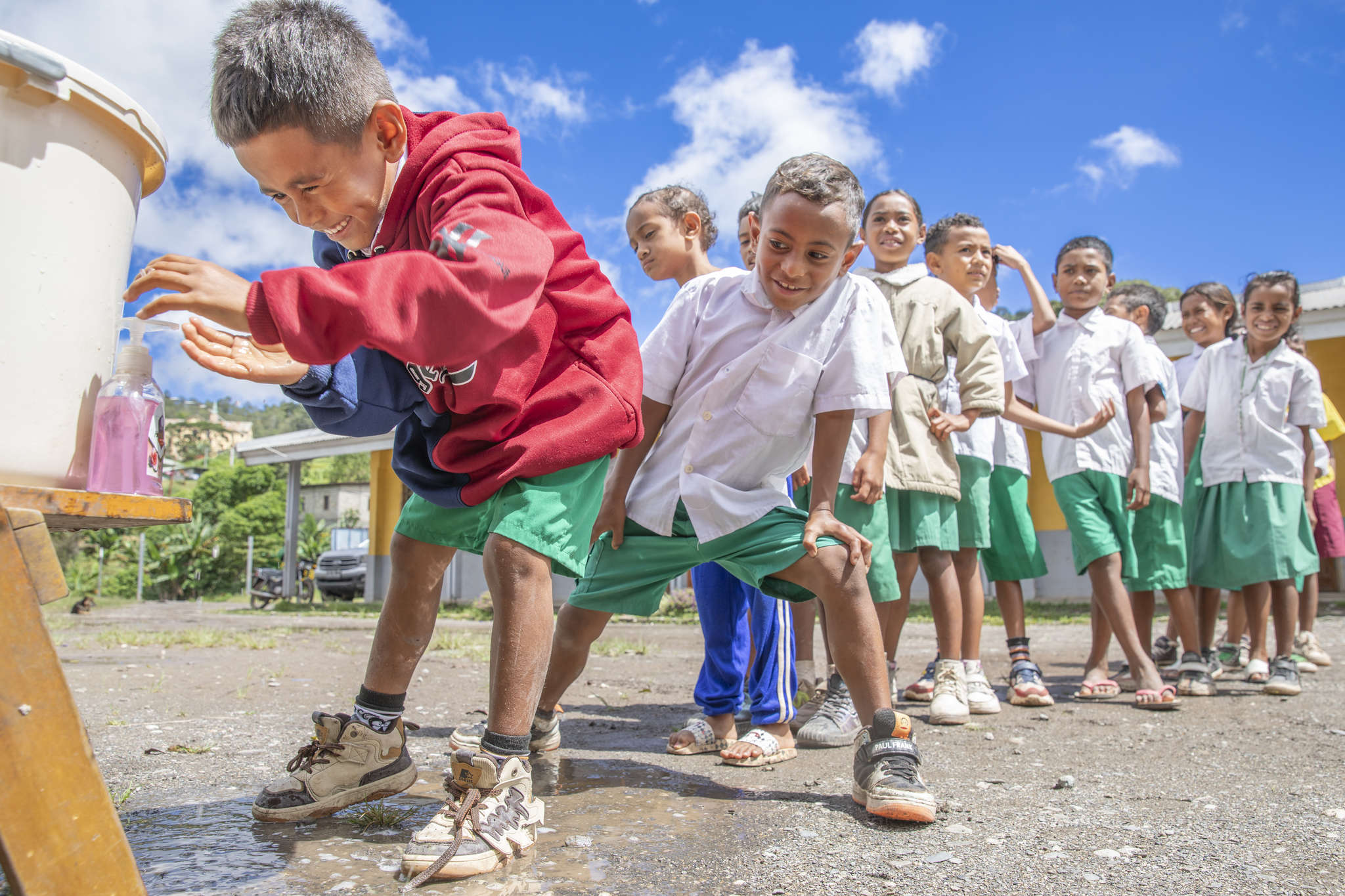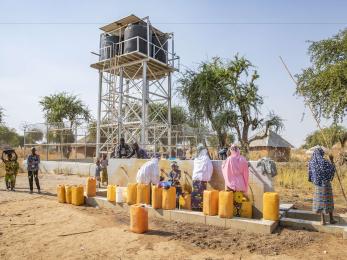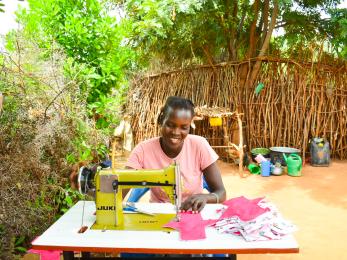Every drop counts: The art of water conservation
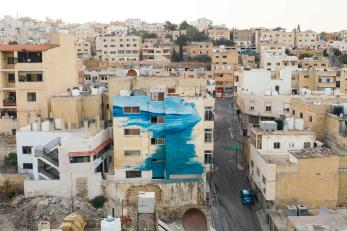
In Amman, a lively city crisscrossed in roads lined with sandstone buildings, wild animals roamed in the area’s once verdant landscape. It is said that long ago gazelles used to gather at a large watering hole in northern Amman, in what is now known as the Ein Ghazal neighbourhood. Ein Ghazal—which means “water spring of the gazelle”—is no longer home to the freshwater lake. In fact, Jordan is one of the most water-scarce countries in the world, with many households lacking a deep understanding about the nation’s depleting water supply.
Since 2017, our team in Jordan has been bringing awareness to communities around water scarcity and the importance of taking part in conservation through our “Hold Water” street art project. When we brainstormed ideas on how to build awareness, I recalled my passion for art and pitched an idea for murals in public spaces. Murals would beautify our communities and remain a lasting reminder to the many people who saw them every day. This spring, we unveiled a vibrant mural in Ein Ghazal, featuring a gazelle drinking at a water spring, as a reminder to protect the resources we have now and the natural beauty of our country.
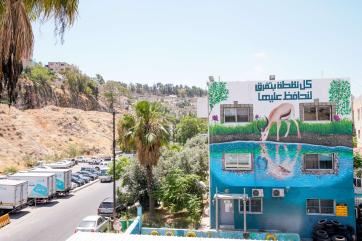
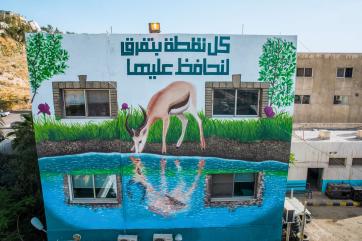
The Ein Ghazal mural is just one of the dozen we’ve put up across northern Jordan. It’s impossible to go into the area without passing by a striking piece of art with a powerful message that every drop of water counts. We held community workshops, making sure to include young people and women, to share water conservation ideas and come up with the concepts they wanted to see painted in their own neighbourhood. We took those sketches and worked with both Jordanian and international artists to bring the ideas to the large-scale canvases on the sides of buildings. It was a deeply collaborative process to see our communities’ ideas and messages come together to share water-saving techniques.
The “Hold Water” street art project is part of a larger programme promoting water conservation by supporting the use of rainwater retention structures, grey-water treatment, efficient irrigation systems, and water-saving devices like efficient shower heads, toilets, and washing machines. While the programme aids in bringing water-saving techniques directly to communities, we’ve prioritised outreach and communications to help Jordanians understand the challenges we’re facing. Jordan’s aquifers—the primary source of water—are being depleted faster than they can refill. This situation has been exacerbated as Jordan has welcomed more than 650,000 Syrian refugees, and by the growing effects of climate change.
In addition to creating murals to help spread awareness, we’ve used social media like WhatsApp and Facebook to reach farmers who lack information on how to optimise their irrigation systems and provided educational materials to help improve their practices. We’re working with journalists to write more intensively and accurately on water conservation issues. And to raise awareness with children—and create lifelong water conservationists—we’ve collaborated with a local cultural center to put on interactive puppet shows to engage with families.
My personal favourite mural features a woman looking skyward, embracing the rain droplets all around her in celebration of water as a gift. The art is especially resonant with me because the community helped paint parts of it by writing messages highlighting the importance and value of this precious resource. The aim of the “Hold Water” street art project has been to spark conversations on water scarcity and raise awareness in Amman households—so when I saw a young woman from the Irbid neighbourhood step onto a lift and pick up a paint brush, it felt like the community had really embraced the message of water conservation as their own.
Our murals have been so well-received that the country’s water company, Miyahuna, commissioned a set of artwork for their water towers and reservoirs. The black iris flower is the country’s national symbol of growth and renewal and was the perfect centerpiece for the tower murals. Our partnership with Miyahuna helped to further the message of sustainable water-saving practices for our communities.
My hope for the “Hold Water” project is that we can leave behind a legacy of not just bringing impactful and bold art to our communities, but that we deliver an essential message of saving every single drop of water. We are resilient—just like Jordan’s national flower and bird, the black iris and Sinai rosefinch—and will continue to protect our water for today and generations to come.

